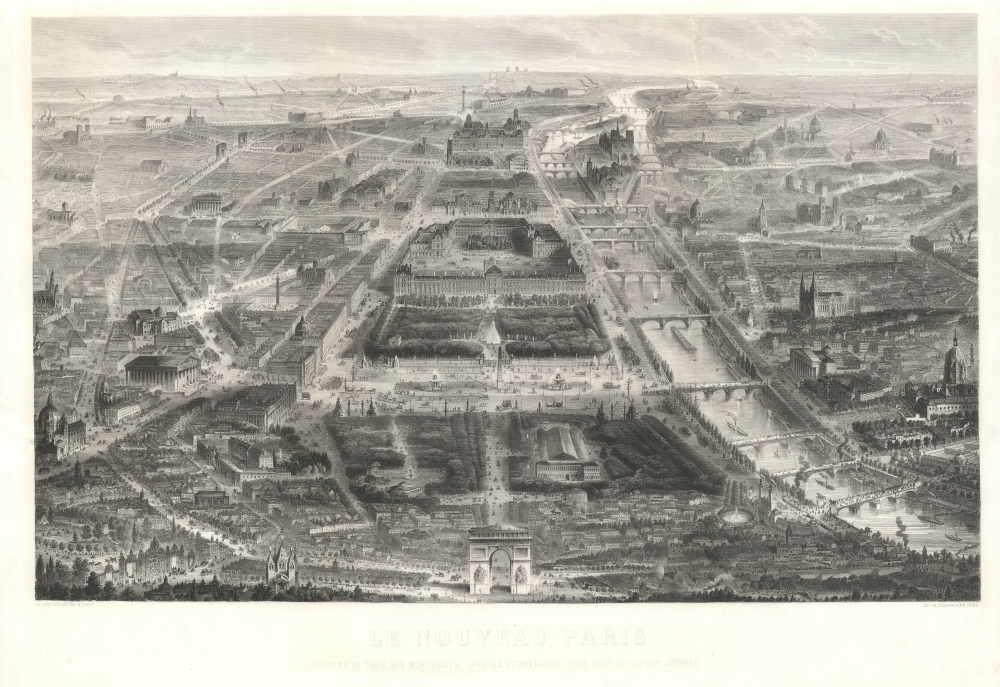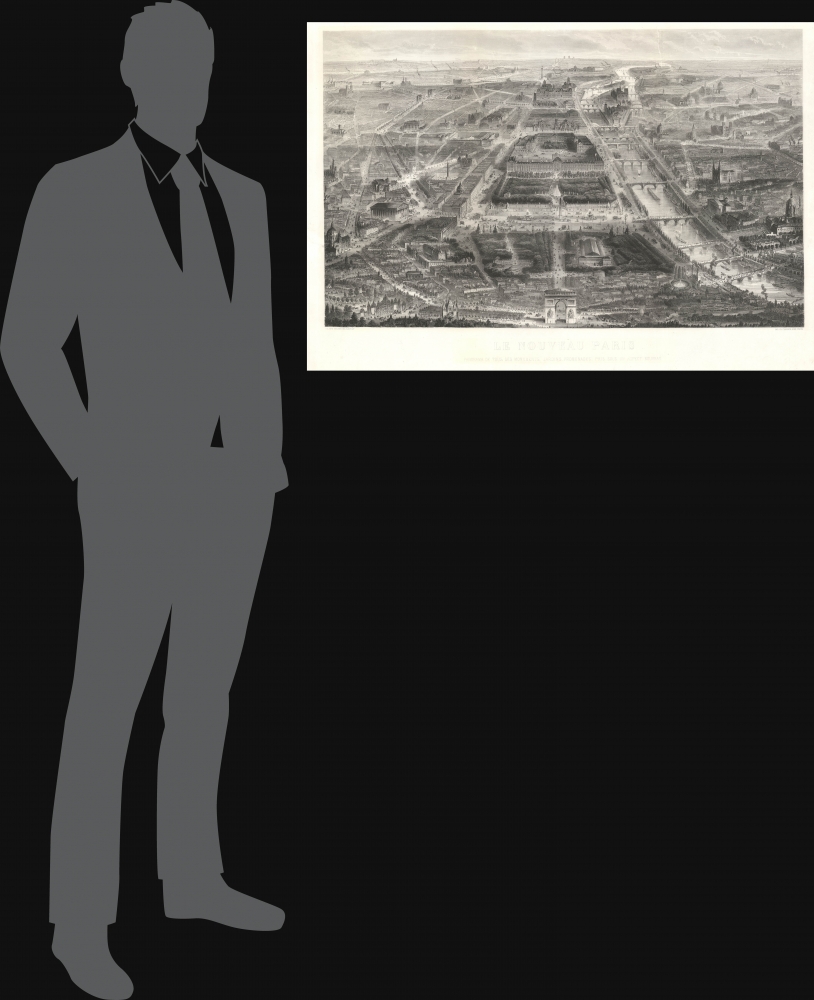This item has been sold, but you can get on the Waitlist to be notified if another example becomes available, or purchase a digital scan.
1865 Guesnu Engraved View of Paris, France
NouveauParis-guesnu-1865
Title
1865 (undated) 24 x 35 in (60.96 x 88.9 cm)
Description
A Closer Look
The view looks east on Paris, from a high point above and to the west of the Arc de Triomphe. It highlights the Avenue des Champs-Élysées, the Palais des Tuileries, and the Louvre. The foreground and middle ground of the view are enlarged in perspective to emphasize the Arc de Triomphe. Haussmann's grand tree-lined ray-like avenues are evident throughout the city. The Seine appears at right, with its many bridges, some new. Pedestrians fill the avenues and the Place de la Concorde, with its famous Luxor Obelisk.Haussmann Renovations
In the mid-1860s, Paris was undergoing a dramatic transformation under the direction of Baron Georges-Eugène Haussmann, the Prefect of the Seine appointed by Emperor Napoleon III. Haussmann's ambitious urban renewal project aimed to modernize the medieval city, replacing narrow, winding alleys with broad, straight boulevards lined with neoclassical stone buildings. The initiative sought to improve sanitation, reduce traffic congestion, and render the city more aesthetically pleasing. This period of renovation also witnessed the construction of major landmarks like the Paris Opera. While the sweeping changes were celebrated by many for modernizing Paris, they also led to the displacement of numerous residents and small businesses, causing significant social upheaval and debate about the nature and purpose of urban planning.Publication History and Census
This view was composed and engraved by Marie-Hilaire Guesnu and printed by Charles Chardon. There is a more common variant of this view in which the Arc de Triomphe is more proportionally sized. It was updated and reissued in a significantly smaller format in the 1870s. We see no records of the present view.CartographerS
Marie-Hilaire Guesnu (January 10, 1820 - November 11, 1868) was a artist and engraver active in Paris during the mid-19th century. He worked with a number of contemporaneous publishers, including Auguste Logerot (fl. c. 1839 - c. 1880) and Charles Chardon (1832 - 1896). He exhibited at the Paris Salon between 1842 and 1865. Cartographically he is known for two exceptionally desirable view maps of Pairs, his tourist monument map of Paris, and a view of Paris from the Bois de Boulogne. We have discovered considerable confusion regrading his dates. The most conventional dates are 1820 - 1868, but we also see 1802 - 1880, 1801 - 1868, and 1808 - 1880. More by this mapmaker...
Charles Chardon (1832 - May 24, 1896) was a Paris, France, based printer and publisher active in the late 19th century. The firm was originally founded in 1818 by Chardon the elder on Rue Pierre-Sarrazin. Around 1835 he relocated to Rue Hautefeuille. In 1850 the firm was passed to Francois Chardon, his eldest son, and then in 1862 to Charles Chardon, his younger son. Charles relocated the firm to larger offices at 10, Rue de l'Abbaye. By 1880 Charles Chardon, from his office at 10 Rue de l'Abbaye, was promoting himself as a heliographic engraver - an early photoengraving technique of which he was an early adopter. Possibly because of his heliographic press, Chardon was contracted to produce numerous prints from drawings stored at the Chalcographie of the Louvre. Francois Chardon passed the firm to Charles Wittmann in 1890. Continuing in Chardon's tradition, in 1896 Wittmann become the director of the Louvre's Chalcographie. Learn More...




